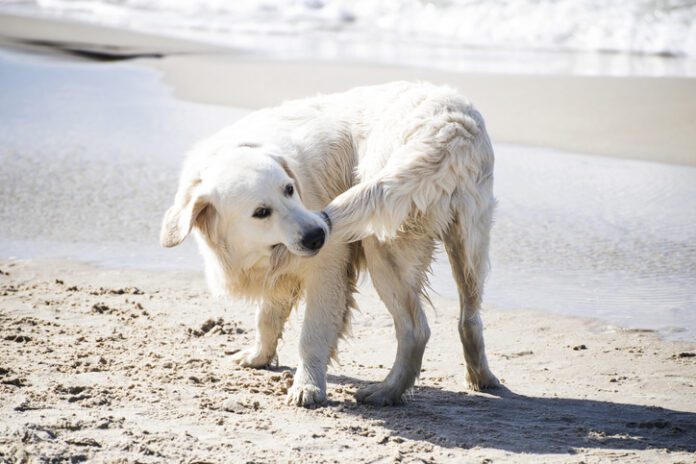Dogs chase their tails for many reasons. Not sure if you should laugh it off or intervene? Here’s what you need to know.
Puppies often bite their tails as a part of their natural exploration and development. It’s like a toy – right there – attached to her body! And it’s moving, often erratically, as the puppy moves – it must be caught! At the other end of the life cycle, an older dog might engage in tail chasing as a repetitive behavior; this is not uncommon as aging dogs experience cognitive decline. And there are several more reasons in between:
- Boredom and Excess Energy. A dog who lacks sufficient mental and physical stimulation may resort to tail chasing as self-entertainment and to burn off some steam. This can be especially common in younger dogs and breeds known to be highly energetic. If your dog spends the work day home alone, consider recruiting a friend or professional dog walker to help break up the day or look for a well-run dog daycare as a source of enrichment and an outlet for energy.
- Medical Reasons. Allergies and parasites can also lead to tail-chasing behavior. Fleas, other parasites, and even environmental allergies can make the dog’s tail and hindquarters itchy, and they might spin and try and catch their tail in order to bite at it to relieve the itching. Also, in some dogs, tail chasing can be an obsessive behavior. If your dog’s tail chasing feels excessive or compulsive in nature, consult your veterinarian and a qualified positive-reinforcement trainer for help.
- Attention Seeking. It’s hard not to laugh at a dog whirling itself into a dizzying frenzy in pursuit of the seemingly just-out-of-reach extension of its backbone. Dog chases its tail, we laugh, dog notices our attention to his shenanigans, and voilà! The tail chasing has been reinforced! You might think treats reign supreme when it comes to reinforcing behavior, but attention is a big deal – especially when you’re busy and not directly engaging with your dog.
If your dog’s tail chasing is infrequent, doesn’t last for long periods, and you can easily redirect him to another activity, it’s likely just a harmless behavior she enjoys – and it’s totally OK to laugh. If the tail chasing bothers you, make a point not to laugh – act like your dog is invisible. Once he stops chasing his tail, calmly redirect his attention to another activity such as chewing a favorite bone on his bed and offer calm praise (attention!) for that behavior instead.







The majority of the time, when they are being lured by food, I observe them moving and chasing tails. I enjoy seeing them at that moment. Do they just do it when they are joyful?